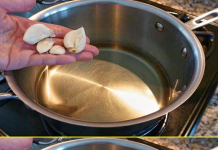Clothes should not get soaked after you put them in the washer. Get your washing machine spinning again with these tips… and learn how to call in the professionals.
Question : I went to transfer a load of laundry from the washer to the dryer, and the clothes were soaked! Why won’t my washer spin the water out? Should I call a technician to fix a washer that won’t spin or fix the problem myself?
A: Don’t call for backup just yet. If your washer won’t spin, it might signal a malfunction that requires a repairman, but oftentimes a simple DIY fix can get your washing machine working once more. A few common causes of your washer not spinning include:
- The laundry in the drum is unbalanced, or there’s too much of it.
- You could be having power issues with your washing machine, or the circuit breaker itself.
- You might be using the wrong type of laundry detergent.
Try the troubleshooting tips below to determine why your washing machine won’t spin; they should help you solve the issue without hiring a washing machine repair professional. Note that some of these repairs may require you to remove the back of the washing machine to check internal components; this should only be done after the machine is unplugged and the water source is shut off.

Redistribute the laundry in the drum.
If you’re wondering how to fix a washing machine that won’t spin, your first order of business should be to rearrange the clothes in the drum. An unbalanced load of laundry is one of the most common causes of an inadequate spin cycle. Sometimes clothing can settle on one side of the drum, throwing off the motion of the washing machine. (This happens most often when washing large and heavy items like comforters and heavy coats. A washer won’t spin with a heavy load, so you might get better results if you remove a few items from the drum.) Moreover, some newer machines won’t reach high speeds with off-balanced loads, which leaves clothes dripping wet. If you suspect a distribution problem, try rearranging your clumped-up wet laundry and running the spin cycle again.
Level an off-kilter washer.
If it is positioned unevenly on its adjustable pedestal, your washer won’t spin properly. Look for other signs of a machine that isn’t level, including excess noise and vibration during the wash cycle. Lay a level across the top of the machine to confirm. If the machine is indeed not level, adjust each of the machine’s legs higher or lower until it is.
Check the plug and the breaker box to make sure the washing machine is getting power.
This advice may sound like a no-brainer, but still, you should double-check that the washer is plugged in. A mid-cycle bump or jiggle could have caused the plug to work its way out of the outlet, and pushing the plug back in may be all you need to be back in business. If the power cord is secure in the outlet, check your home’s circuit panel to ensure that a breaker didn’t trip.
Stop using an extension cord with your washing machine.
The heavy-duty power cord to your washer should be plugged directly into an outlet, not into an extension cord. Many extension cords can’t conduct enough electricity to power the washer’s motor, which can subsequently overheat and shut itself off. The washer will probably function again after the motor cools, but the problem will likely occur again. Plus, relying on an extension cord will shorten the useful life of the washer. If you can’t move the washing machine closer to an outlet, have a new outlet wired within a reasonable distance.

Make sure the spin switch isn’t bent.
In a top-loading washing machine, a small protrusion on the underside of the lid depresses a switch when you close the lid, serving as a safety precaution to detect when the lid is closed. If the protrusion has bent out of shape, it may not trigger the switch as it should.
Test the theory by opening the lid, selecting the spin cycle on your washer, and then manually depressing the switch with a finger. If the machine starts spinning normally, simply bend the protrusion back into shape so it triggers the spin switch properly.
Did your washer not spin when you pressed the switch manually? The problem could stem from a defect in the switch itself. Fortunately, replacing a broken spin switch is usually a DIY-friendly project, depending on the washing machine brand and model. Consult your owner’s manual for instructions.
RELATED: What’s the Difference? Top Load vs. Front Load Washers
If you have a front-load washer, confirm that you’re using high-efficiency detergent.
If your washer is not working on spin cycle, the problem could have something to do with your detergent. Most front-load washing machines require high-efficiency (HE) detergents with low foaming action. If you use a non-HE detergents in a front-load washer it may produce so many suds that the machine’s sensors perceive that the washer is too full. As a result, the washer won’t reach adequate spin speeds, leaving your clothes dripping wet at the end of the cycle.
If the washing machine won’t drain or spin, make sure there’s no kink in the drain hose.
A kink would hinder water flow to and from the appliance, resulting in a washer that starts the spin cycle but never picks up speed and doesn’t drain water. Pull out the washer to look behind it and check that the hose is kink-free, then carefully push the machine back into place so that you do not inadvertently crimp the hose again.
Check for a blockage in the drainage system.
If you’re wondering, could a jammed pump cause my washer not to spin, the answer is absolutely. Small items like pennies, keys, buttons, or hair clips can fall out of pockets and off of clothing and lodge themselves in the hoses that attach the washer to the drain pump. Ultimately, the blocked drainage prevents the machine from spinning.
In some washers, the drain pump (which is typically located in the back of the washer, near the floor) can be accessed without removing the washer’s back panel, while other models require you to detach the washer back. Consult your owner’s manual for model-specific instructions. Then, remove the clamps that hold the hoses in place, clear any clogs that you find, and reattach the hoses.
Replace or readjust the drive belt.
If your washing machine is not spinning but is making noise, a broken drive belt, or a drive belt that has slipped off the pulley wheel, might be the culprit. To determine if this is the case, remove the back of the washer and visually check to see if the belt is still on the pulley. If it isn’t, you may need to replace the drive belt. Be sure to purchase one that’s made specifically for your brand and model of washer.

If you have tried the above methods and think that your washing machine spin cycle is broken, call a professional repair person.
The following washing machine issues are beyond most DIYers’ realms of expertise, and should probably be addressed by a professional:
- The drain pump may be to blame when water won’t spin out. If you know how to use a multimeter, you can perform a continuity check on the drain pump’s motor connections to see if they’re still viable. However, that’s as far as the DIY job goes; non-functioning drain pumps will have to be replaced by a repairman.
- To determine whether the motor coupler (a small rubber and plastic connector piece located between the washer’s motor and its transmission) has broken, conduct this simple test: Set the dial on your washer to a wash cycle and turn it on, allowing the drum to fill with water. When the water reaches the fill level, agitation should begin. If you hear the motor kick on but the center agitator does not move, your machine needs a new coupler. While a replacement is in the ballpark of a mere $20, this fix is only DIY-friendly for those who are skilled in small motor repair.
- A motor that doesn’t run at all, despite good connections to the power source and breaker, could prevent a washer from spinning. Some motors contain carbon brushes that wear out over time, and those can be replaced inexpensively. However, the problem could be more extensive than a worn carbon brush, and it’s impossible to know without removing the motor and testing it. Even with the washer unplugged, induction-type motors that contain capacitors can give you quite an electric shock, so motor testing and repairs are best left to the pros.
- Some washers feature electro-mechanical transmission shifters or clutches that, when worn out, can result in washing machine leaks. This issue also requires attention from a repairman.










